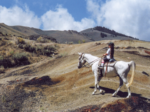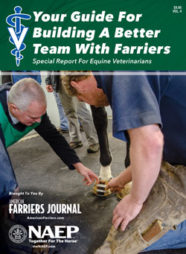Advertise Follow Us
Articles Tagged with ''White Line DIsease''
Hoof Nutrition Intelligence
Shoeing for a Living
Horseshoeing’s Engineering Puzzle Charms Finger Lakes Farrier
Kirk Smith enjoys the challenge of balancing the horse’s system of levers and pulleys
Read More
50 Best Farrier Takeaways Of 2015
Here’s a look back at a few of the top ideas that hoof-care professionals shared in the pages of American Farriers Journal during the past year
Read More
Preventing And Addressing Hoof Flares
Identifying and correctly managing deformations are critical to keeping horses sound
Read More
Free eGuide
White Line Disease: Different Approaches to an Old Problem
Our in-depth eGuide on white line disease aims to dramatically help the horses in your practice suffering from this ailment, and it’s FREE!
Read More
Help Horse Owners Understand Climate Plays a Critical Role in Hoof Health
Ideal conditions can be created, even in less than ideal climates
Read More








